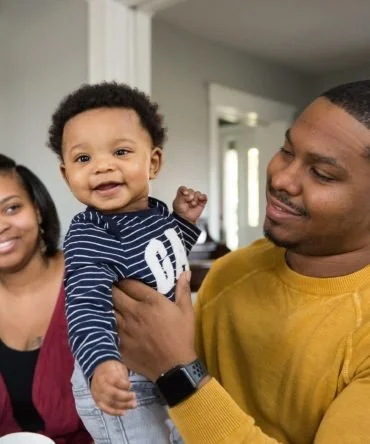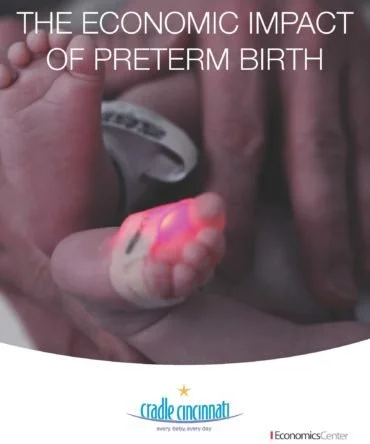
The Issues + Data
Together, we’re saving lives.
As recently as 2011, Hamilton County had the second-worst infant mortality rate for counties our size. However, thanks to hundreds of partners working together over the last 10 years, we’ve seen significant progress.
Despite this progress, the problem of infant death continues to plague our community.
What is infant mortality?
A community's infant mortality rate is the rate at which live-born babies in that community die from any cause before their first birthday. It's typically portrayed as deaths per one thousand live births. So, for example, the 2021 infant mortality rate in the US was 5.4. That means that for every 1,000 babies born alive in the US in 2021, 5.4 did not survive. Because its causes are so multi-faceted, infant mortality is frequently cited as one of the best measures of a community's overall health.
The leading causes of infant death.
As an organization, we are constantly tracking and learning about the leading causes of infant death. Being informed helps provide support to our partners and to all our initiatives.
Cradle Cincinnati uses provisional data from the Ohio Department of Health Bureau of Vital Statistics and Hamilton County Public Health. Provisional data is not final.
The complicated issue of infant mortality requires a multi-year approach. See our detailed collaboration efforts in our most recent strategic plan.
WHAT WE KNOW
Key issues effecting infant mortality
Preterm Birth
Babies born before the start of a mother’s third trimester are considered extremely preterm.
48% of all infant deaths in the past five years were babies who were born extremely preterm.
Stress during pregnancy, implicit bias, unexpected pregnancy and smoking all contribute to preterm birth.
Learn more about the impact and causes of preterm birth in Hamilton County.
DOWNLOAD FULL REPORT
Unsafe Sleep
Sleep-related infant deaths continue to be one of the leading causes of infant mortality in Hamilton County, accounting for 21% of infant deaths between 2018-2022.
Babies who sleep alone, on their back and in a crib, are the least likely to die from a sleep-related cause .
In our community, sleeping with another person on an adult bed or couch is the leading cause of sleep-related infant deaths.
Racism
Racism has been embedded in our systems and affects the health and birth outcomes of Black people who give birth.
Every year, Black babies die at more than 3X the rate of other babies in Cincinnati, regardless of their parents’ socioeconomic status or health behaviors.
Racial Disparities in income, housing, and education impact our health. and it's not a level playing field.
Learn about racial disparities in maternal and infant health.
DOWNLOAD FULL REPORT
Reports
Data Dictionary
A guide to how we define the infant and maternal health measures tracked in our Annual Report.
Interested in getting involved?
Collaboration is the key to reducing infant mortality. Join our mailing list to learn how your involvement can make an impact.












